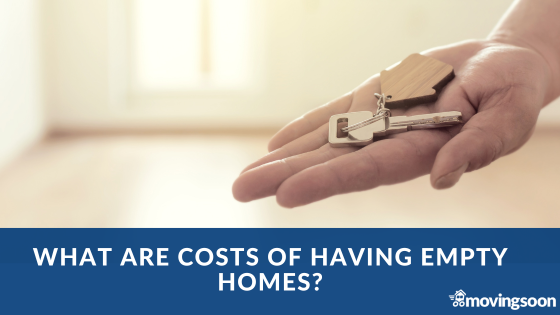Housing Associations, Councils and Private Landlords can be left out of pocket with empty homes.
There’s a straightforward way to calculate the financial impact of renting out a property quickly versus leaving it vacant for long periods. Here’s a step-by-step breakdown of the calculation:
Calculation Components
- Lost Rent: The amount of rent not earned while the property is vacant.
- Maintenance Costs: Any costs incurred to keep the property in good condition while it is vacant.
- Marketing Costs: Costs associated with finding new tenants (advertising, agent fees, etc.).
- Potential Rent Income: The amount of rent that would be earned once the property is rented out.
- Operational Costs: Ongoing costs that are incurred whether the property is rented or not (property management etc.).
- Council Tax: You still pay council tax on an empty homes. Some councils will charge more for this if they are long term empty.
- Utilities Charges: You still have to pay for water, gas and electricity even if you are not using them as there are standing charges.
Steps to Calculate Cost and Benefit Per Empty Home
- Determine Lost Rent:
Lost Rent = Monthly Rent × Number of Vacant Months - Calculate Maintenance and Marketing Costs:
Total Costs = Maintenance Costs + Marketing Costs - Calculate Potential Rent Income:
Potential Rent Income = Monthly Rent × Number of Rented Months - Calculate Council Tax:
Council Tax Cost = Monthly Council Tax (this will vary depending on location) - Calculate Utilities Charges:
Utilities Costs = Gas + Electricity + Water - Calculate Net Benefit:
Net Benefit = Potential Rent Income − (Lost Rent + Total Costs + Operational Costs)
Example Calculation of An Empty Home
Let’s assume the following:
- Monthly Rent: £450
- Number of Vacant Months: 3
- Maintenance Costs: £100 per month
- Marketing Costs: £100 (as an example)
- Council Tax: £150 per month
- Utilities (Gas, Electricity, Water): £100 per month
- Number of Months Considered: 6
- Lost Rent:
Lost Rent = £450 × 3 = £1,350 - Maintenance Costs:
Maintenance Costs = £100 × 3 = £300 - Marketing Costs:
Markeing Costs = £100 - Council Tax:
Council Tax Costs = £150 × 3 = £450 - Utilities Costs:
Utilities Costs = £100 × 3 = £300 - Total Costs (whilst an empty void property):
Total Costs = Maintenance Costs + Marketing Costs + Council Tax + Utilities Costs = £300 + £100 + £450 + £300 = £1,150 - Potential Rent Income:
Potential Rent Income = £450 × 3 = £1,350 - Operational Costs:
Operational Costs = £100 × 6 = £600 - Net Benefit:
Net Benefit = Potential Rent Income − (Lost Rent + Total Costs + Operational Costs)
Net Benefit = £1,350 − (£1,350 + £1,150 + £600) = £1,350 − £3,100 = − £1,750
In this example, they (housing association, council or private landlord) would face a net loss of £1,750 over the six month period due to it being vacant for the first three months.
Not to mention if homes are left empty for a long period of time they may be prone to fly tipping, vandalism or squatting.
Find out more about how we have helped many housing providers find new tenants quickly to remove these costs.
Minimal Marketing Costs Yield Great Returns for Empty Homes
In this scenario, the housing provider faces a net loss of £1,750 over the 6-month period due to the vacancy. However, the importance of minimal marketing costs becomes even more evident:
- Reduced Vacancy Periods: Effective, low-cost marketing can significantly shorten the time a property remains vacant, reducing lost rent.
- Low Initial Investment: A small investment in marketing, such as £100, can lead to substantial gains by minimising the vacancy period and maximising rental income.
- Avoiding Additional Costs: Renting the property out quickly reduces ongoing costs like council tax and utilities that continue to accrue while the property is empty.
Practical Strategy
To maximise the benefits:
- Invest in Affordable Marketing: Utilise online listings, social media, and local advertisements with a modest budget to attract potential tenants quickly. Get in touch to see how we can help.
- Streamline Maintenance: Ensure the property is well-maintained and ready for occupancy to appeal to prospective tenants.
- Competitive Pricing: Set the rent at a competitive rate to attract tenants quickly, reducing the vacancy period.
Focusing on these strategies, a housing provider can optimise its operations, minimise vacancies and achieve a higher return on investment with minimal marketing expenditure. This approach not only saves on unnecessary costs but also ensures a steady income stream.
By carefully analysing these factors, housing associations, councils or private landlords can develop strategies to maximise the financial benefits of renting out properties quickly and minimise losses from vacancies.

